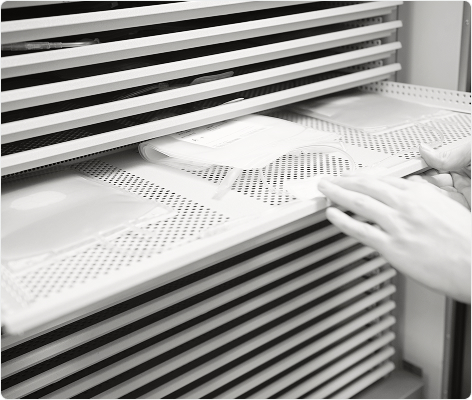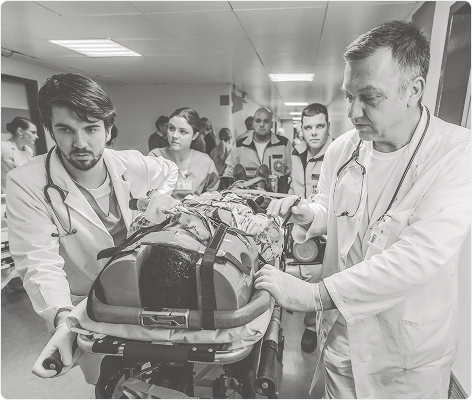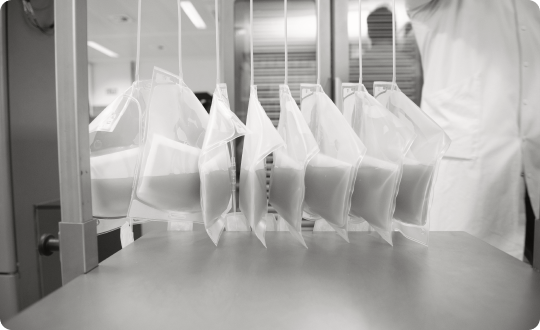PATHOGEN INACTIVATION
Improve Availability
The availability of safe blood products is critical to achieve optimal patient outcomes
However, blood is becoming an increasingly scarce resource and blood supplies continue to be threatened by a myriad of challenges
 Increased need
Increased need
Rising Demand Driven by an Aging Population
An aging population receiving a sophisticated treatment regimen as part of the overall improvement in healthcare, results in increased need of specific blood components in certain countries. Consider platelet concentrates used in cancer therapy or plasma required to produce plasma derived medicinal products (PDMPs).

 Every donor counts
Every donor counts
Safeguarding Blood Supply: Fewer Donors, Smarter Solutions
Donors are becoming increasingly a scarce resource; the donor population is aging in many countries while willingness to donate is declining. Every donor willing to donate counts, however new donor deferral rules intended to maintain safety and quality of blood components, might impact immediate availability of blood components and donor retention. The INTERCEPT™ Blood System for platelets and plasma may allow a reduction in the rate of travel related donor deferrals and help maintain adequate supply.

 Every drop counts
Every drop counts
Longer Shelf Life, Less Waste, Safer Blood
To ensure patient safety, the storage time of platelets or plasma (after thawing) is limited. Bacterial screening delays the time to release platelet concentrates. Both result in reduced shelf life and increased waste of precious blood components. The INTERCEPT™ Blood System helps to increase shelf life, to reduce waste and gives access to new innovative production methods which require less blood.

 Every second matters
Every second matters
Faster, Safer Transfusions
Early transfusion of therapeutic plasma and red blood cells reduces mortality by exsanguination. The availability of INTERCEPT™ treated AB plasma (sometimes referred to as universal plasma) as liquid/thawed plasma with a 5-day storage, allows plasma to be available immediately with the potential to reduce the time to first transfusion and improve the clinical outcome.

Future-Proof Blood Safety
The emergence of the next-blood-borne pathogen is only a matter of time
Over 2.5 million platelet units are treated with the INTERCEPT™ Blood System each year.
Get ready today for the next blood borne safety challenge. Availability of blood products could be reduced during an outbreak or epidemics due to multiple factors including:
- Donor “social distancing”
- Blood drive cancellations
- Donor deferrals
- Product lookbacks and recalls
- Staffing shortages
A proactive approach to pandemic preparedness
Pathogen inactivation’s role in blood availability
- Pl has sustained local platelet availability during outbreaks by maintaining an effective donor pool.
- PI allowed the transfusion of COVID-19 convalescent plasma (CCP) to COVID-19 patients.4,5
- Broad spectrum Pl, including certain emerging arboviruses (Zika Virus, Dengue Virus, West Nile Virus).
- PI helps you to reduce the percentage of travel related donor deferrals and can be used as an alternative to testing.
- Pl-treatment provides hospitals with a transfusion ready platelet unit, without need for secondary testing, irradiation or CMV serology.
- Replacement of bacterial screening avoids false positive results and associated recalls, saving valuable time, resources and platelets for transfusion.
- PI also enables the earlier release of platelets, increases shelf life and reduces outdating rate.
You may also be interested in
- Rasongles P et al., 2009. Transfusion of platelet components prepared with photochemical pathogen inactivation treatment during a Chikungunya virus epidemic in Ile de La Réunion. Transfusion 49: 1083-1091
- Marano G et al., 2017. Ten years since the last Chikungunya virus outbreak in Italy: history repeats itself. Blood Transfus 15: 489-590
- Domanovic D et al., 2019. Pathogen reduction of blood components during outbreaks of infectious diseases in the European Union: an expert opinion from the European Centre for Disease Prevention and Control consultation meeting. Blood Transfus 17: 433-448
- Santa Maria F et al., 2022. Inactivation of SARS-CoV-2 in All Blood Components Using Amotosalen/Ultraviolet A Light and Amustaline/Glutathione Pathogen Reduction Technologies. Pathogens 11: 521
- Bagri A et al., 2022. Antibody profiles in COVID‐19 convalescent plasma prepared with amotosalen/UVA pathogen reduction treatment. Transfusion 62: 570-583
There is no pathogen inactivation process that has been shown to eliminate all pathogens. Certain non-enveloped viruses (e.g., HAV, HEV, B19, and poliovirus) and Bacillus cereus spores have demonstrated resistance to the INTERCEPT™ process. For a full list of warnings, precautions for use and pathogens inactivated, please refer to the Technical Data Sheet and Instructions for Use found in the resource section of this website.


